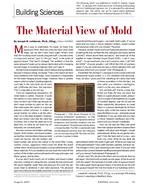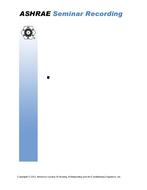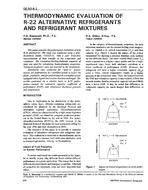Variation of the refrigeration circuit and evaporator coil arrangement from conventional unitary air-conditioning equipment is proposed to improveenergy efficiency and dehumidification performance. This paper presents the modeling and results of variations culminating from an extensiveevaluation of limitations in current unitary equipment design, focusing on latent capacity boundaries and suboptimal heat transfer in theevaporator coil. Analysis using the DOE/ORNL Heat Pump Design Model and other software shows that refrigerant condition through theevaporator coil can be controlled to increase refrigerant phase change heat transfer by maximizing liquid refrigerant fraction.
The relatively low critical point temperature of R-410a limits subcooling at high ambient temperatures occurring in hot climates. In humid climates, another concern is elevated suction pressure, relative to other refrigerants, which inhibits dehumidification. Modeling indicates that maximizing the presence of liquid refrigerant at the boiling point in the evaporator coil significantly increases EER (Energy Efficiency Ratio, Btuh cooling per Watt electric power) because boiling heat transfer coefficient in the liquid-nucleate regime is much greater than in vapor-mist refrigerant regime. The proposed cycle modifications allows synergistic optimization of tube circuiting, face area, and fin density of the evaporator coil, in combination with a controllable return air bypass, to achieve a 15% to 30% improvement in IEER (Integrated Energy Efficiency Ratio, weighted Btuh per Watt according to ANSI/AHRI Standard 340/360-2007). Energy consumption of modified units operating in a hot & arid climates is predicted to be reduced as well, indicating this technology renders a much improved adaptability to climate and load.
Citation: ASHRAE Conference Papers, Denver, CO
Product Details
- Published:
- 2013
- Number of Pages:
- 8
- File Size:
- 1 file , 360 KB
- Product Code(s):
- D-DE-13-C018


